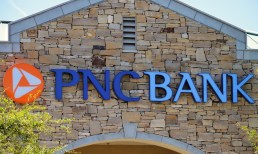In the world of government procurement, the U.S. ranks at the top of the performance list thanks to an emphasis on digitization and optimization. But zoom in on the landscape of smaller, local-level government agencies and schools, and the picture of eProcurement becomes far less modernized.
“When you get below what I’d call a tier-two city from a population perspective, it’s really common for procurement to still be a paper process,” explained Ben Koberna, co-founder of EASiBuy, in a recent conversation with PYMNTS. “They might be using a bulletin board to advertise things.”
And yet, he highlighted, the majority of U.S. government spend occurs at this lower-tier level, by local governments within towns of fewer than 100,000 residents. This represents a massive gap in U.S. public procurement – and a significant opportunity for firms like EASiBuy, which aim to bring greater efficiencies and savings to these procurement initiatives.
Following the announcement of EASiBuy’s acquisition by healthcare procurement technology provider HealthTrust, Koberna dove into the ways that technology can create economies of scale to help government buyers secure the best pricing, while supporting their small supplier base by driving revenues and accelerating vendor payments.
Economies Of Scale
The traditional procurement workflow of an RFx — which can stand for a Request for Proposal, Request for Quote or otherwise — allows a government to ensure a level playing field among possible vendors to secure a contract, while also allowing that agency to secure the most competitive price.
Advertisement: Scroll to Continue
The challenge, however, is that these workflows can take a long time to get started thanks to legacy paper-based procurement processes or lengthy eProcurement initiatives.
“Every government is at some point in a timeline of implementing a gigantic procurement system,” said Koberna. “I’ve seen those things take three, five or 10 years, and cost $8, $10 or $12 million.”
Especially for smaller governments, the RFx model also failed to arm agencies with collective buying power. Cooperative purchasing can bring greater efficiency by combining the buying power of multiple government agencies, allowing for more competitive vendor pricing and negating the need for agencies to manage the RFx process independently. The use of group purchasing organizations (GPOs) can be beneficial, but Koberna noted that they can still rely on manual processes.
“If you look at the current landscape of government GPOs, you’re not going to find a lot of technology and data-driven organizations,” he said. “You either find governments that have just gotten together because they know that economies of scale work, or you find a couple of larger groups running a very traditional bid process, and sort of fitting economies of scale to it.”
Such strategies can make it difficult for agencies to gain insight into whether they are actually saving money, and run the risk of preventing an agency from sourcing locally.
Supporting Local Business
A recent agreement will see healthcare GPO HealthTrust acquire EASiBuy, enabling the latter to develop what the companies have called a Lead Agency Procurement Organization (LAPO) for the government landscape.
In this model, a single government agency or school runs a procurement event and allows other governments or schools to make purchases off of that same contract. In doing so, Koberna explained that smaller governments can access the cost savings often reserved for larger agencies, while still remaining compliant and supporting local businesses. It’s a key objective of government eProcurement technology.
“The whole concept of utility being able to support local, disadvantaged, minority, women-owned, veteran-owned businesses is really important,” noted Koberna. “You don’t have to go very far to find instances where it’s worked very well – or where it hasn’t worked very well.”
The success stories emerge in cases in which government buyers have implemented technology that provides rich data to drive decisions. But success in government procurement is not limited to landing the lowest price or awarding a contract to a local business. It also includes setting government workflows up for success further down the line – especially when it comes to the actual payment for those suppliers.
Today, Koberna said it is “inexcusable” for governments that have invested millions of dollars into their enterprise resource planning (ERP) and other systems to still implement lengthy 45- or 90-day payment terms.
And when government procure-to-pay demands transparency and efficiency, the investments in technology must be able to deliver results that can benefit the community at large. That means governments, their suppliers and the citizens they serve.
“It really is one of the drum beats of the industry,” he said. “To me, too much money has been spent to not have procurement be a really efficient process.”




